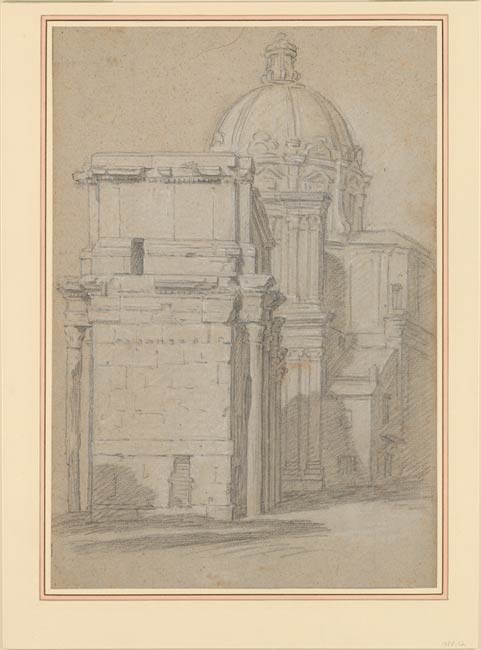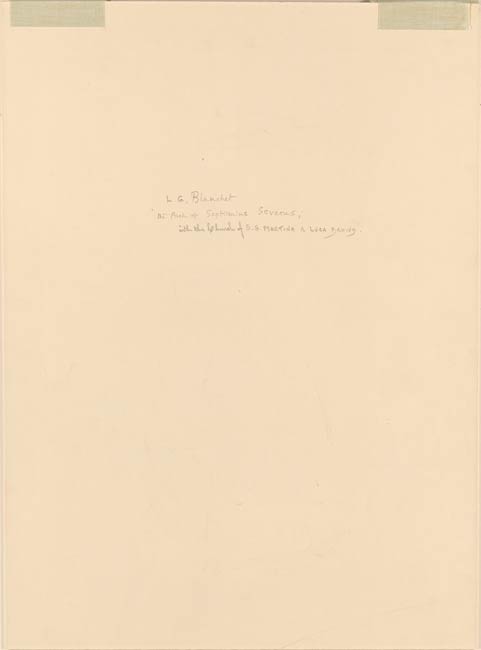

Watermark: none visible through lining.
Blanchet, who was awarded the Prix de Rome in 1727, married and remained in Rome for the rest of his life. Although he was chiefly occupied with portraits and religious subjects, he also drew a number of landscapes of the city and its environs in a soft black and white chalk on gray or gray-green paper. Blanchet's chalk manner, influenced the British artist, Richard Wilson, who came to Rome in 1750 as the protegé of William Lock. That the drawing is by Blanchet is confirmed not only by the style of the work but by the presence of the artist's signature and inscription on a drawing of this type in the Witt collection. The Witt drawing is of a Roman ruin and is signed and inscribed at the lower right, L. G. Blanchet/d'après nature (see London, Royal Academy, France in the eighteenth century, 1968, no. 28).
A curious puzzle surrounding these drawings is the existence of two hundred and seven views of Rome, by far the largest group of related drawings, preserved at Eton college since 1945 and identified by the eighteenth-century collector John Peachey, as the work of Etienne Parrocel, one of the members of that numerous family of artists. Peachey (1749-1816) attended Eton college (1759-61), and went to Rome before 1779, the year that he became a member of the Society of Dilettanti, where according to Lionel Cust (1859-1929), he "had been captivated by the remains of classic antiquity, and had formed a small collection of marbles under the auspices of Jenkins and Gavin Hamilton." He must also have been in contact with Piranesi, who dedicated a plate in Vasi, Candelabri, Cippi (1778) to him. Since Peachey bought the drawings from Lock in 1777 after his return from the Grand Tour, the misidentification of the artist as Parrocel may have come from Lock. That this identification is erroneous is confirmed by experts on Blanchet and Etienne Parrocel alike who feel that the work is that of Blanchet and not at all typical of Parrocel. All the drawings involved, namely those at Eton as well as the Morgan Library's and others formerly in the collection of Sir John and Lady Witt, are by the same artist. One of the drawings in the Witt collection, Landscape with Trees (London, Royal Academy, France in the eighteenth century, 1968, no. 22, fig. 260) bears an analogous inscription, No undici, in the same hand as at Eton, and it may be assumed that the group forms a series made by the artist for himself or for an early collector.
In 1577, the then recently founded Accademia di San Luca was given the ancient church of San Martina in the Forum on the site of the Secretarium Senatus near the Arch of Septimus Severus, which was renamed San Luca, after the patron saint of painters. An additional piece of land was purchased and plans for a new church were made, although nothing happened until the seventeenth century when Pietro da Cortona, at the invitation of Cardinal Francesco Barberini, protector of the academy, was elected principe. With some interruptions construction began in 1635 and church was completed by 1669 when Pietro da Cortona died.
Witt, John Clermont, Sir, 1907- former owner.
Witt, Lady, former owner.
Gozzi, Elsie Lee, Countess, -1994, donor.
